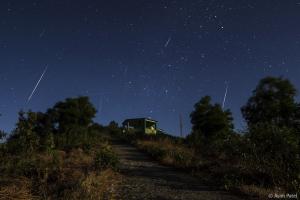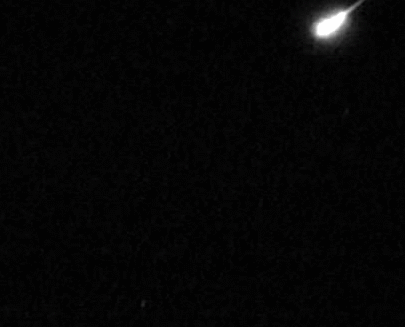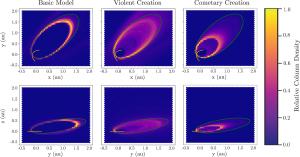Blog
Banging in the Shower
21 June 2023
 Asim Patel
Asim PatelIf you’ve ever seen a meteor shower, you know it can be an amazing sight. You watch the skies as every few moments there’s a streak of light. Sometimes bright and in your field of vision. Sometimes starting just out of the corner of your eye. Although a meteor can occur at any time, they tend to appear at certain times of the year, such as the Perseids of August, or the Orionids of October.
Meteor showers are named by the constellation they appear to emanate from. It’s consistent from year to year, as is the time of year. This is because meteor showers occur when Earth passes through a debris trail of a comet. The Orionids, for example, occur when we pass through the trail of Halley’s Comet. When the dust-like particles cast off from the comet strike our atmosphere, they glow as they burn up. The cometary origins of meteors have been known since the late 1800s, and while most meteor showers are caused by comets, not all of them are.
 NASA/George Varros
NASA/George VarrosThe Geminids are the best example of this exception. They occur in December and can be quite intense. They seem to be growing more intense over the years as Earth’s orbit shifts to pass more strongly through the debris trail. For a while, the origin of the Geminids was a bit of a mystery, since they had no corresponding comet. But then in 1983, an asteroid called 3200 Phaethon was discovered, with an orbit directly in line with the Geminid debris trail.
Phaeton is an odd asteroid, just 6 kilometers across. It’s not icy, but it has been seen with a dusty tail, leading some to refer to it as a dusty comet. The reason it produces a trail is because of its dusty surface composition and the fact that Phaeton’s orbit takes it within 0.14 AU of the Sun, which is less than half the orbital distance of Mercury. When Phaeton makes its closest approach to the Sun, its surface is baked like a dry lake bed, causing a trail of dust.
Astronomers have assumed that the Geminid dust trail formed gradually as dust accumulated with each of Phaeton’s orbits, following the cometary process. But a new study finds this isn’t the case.1 Instead the team found the Geminids appeared rapidly.
 Cukier and Szalay
Cukier and SzalayThey used data from the Parker Solar Probe, which measured the size and composition of Geminid dust particles as well as their relative speed and direction. The team then compared the observed data with three models: a “basic” model where particles were simply set along the orbital path, a cometary model which trickled particles into the debris path gradually, and a violent origin model, which assumed particles were released in a single burst.
Of the three models, the violent burst approach was the best fit to observations. This implies that the origin of the Geminids was not slow and steady, but rather due to an impact event where Phaeton was struck by a smaller asteroid. This model addresses one of the problems with the “dusty comet” model, which some argued isn’t sufficient to explain the strength of the Geminids. But there are still aspects this study doesn’t explain. The data and model aren’t precise enough to pin down a particular impact origin, only that an impact is the likely cause.
With all their beauty, the Geminids still hold a few mysteries.
Cukier, W. Z., and J. R. Szalay. “Formation, Structure, and Detectability of the Geminids Meteoroid Stream.” The Planetary Science Journal 4.6 (2023): 109. ↩︎